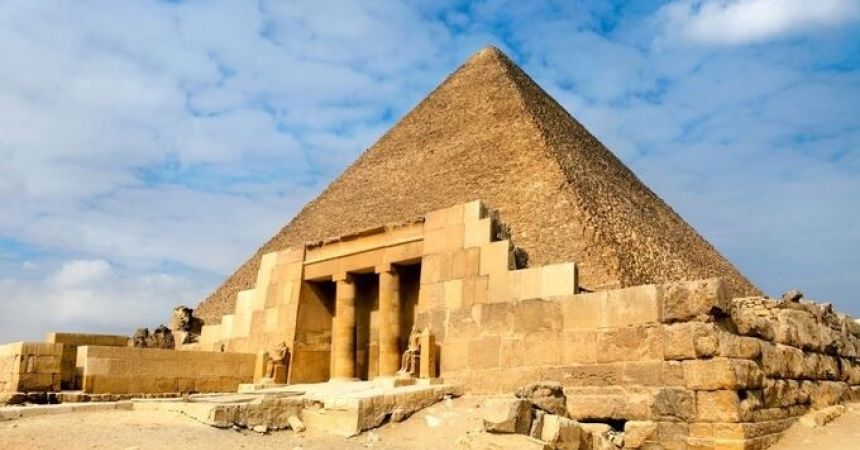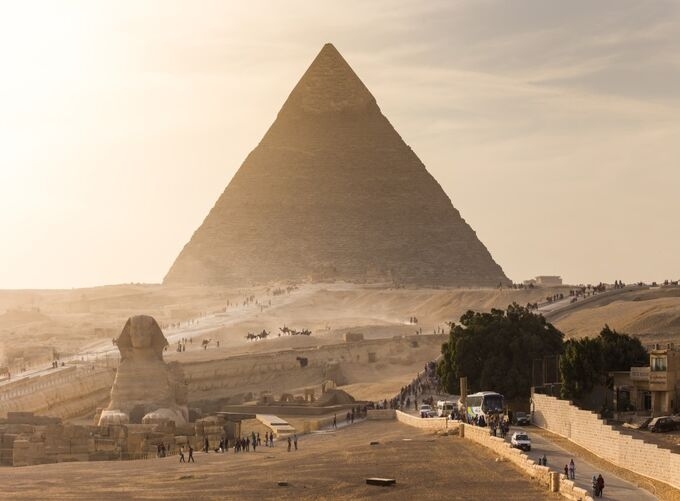
Travel Clothing Guide for Egypt Trips
Egypt, with its rich history, diverse landscapes, and vibrant culture, offers a unique travel experience. However, its climate and cultural norms require careful consideration when it comes to packing your wardrobe. Whether you’re exploring ancient ruins, cruising the Nile river, or relaxing by the Red Sea, this guide will help you decide what to wear to ensure comfort, respect, and style during your Egyptian adventure.
Dressing Guide for Egypt Travel
-
Understanding Egypt’s Climate
Egypt has a predominantly desert climate, characterized by hot summers, mild winters, and significant temperature variations between day and night. Coastal areas like Alexandria and the Red Sea experience more moderate temperatures, while cities like Cairo, Luxor, and Aswan can get extremely hot, especially during the summer months. Here’s a quick breakdown of the climate:
- Summer (May to September): Very hot, with temperatures often exceeding 40°C (104°F) in southern regions.
- Winter (October to April): Mild and pleasant, with cooler nights and temperatures ranging from 14°C (57°F) to 24°C (75°F).
- Coastal Areas: More moderate temperatures year-round but still warm in the summer.
-
General Dress Code Tips
Modesty is Key: Egypt is a predominantly Muslim country with conservative dress norms. Dressing modestly is important, especially for women. This means covering your shoulders, chest, and knees. For men, avoiding shorts and sleeveless shirts in public areas is advisable.
Light and Breathable Fabrics: Given the heat, especially in summer, pack lightweight, breathable fabrics like cotton, linen, and moisture-wicking materials. These will help keep you cool and comfortable.
Layers for Variability: Evenings can be cooler, especially in the desert or during winter. Pack a few layering pieces like light jackets, cardigans, or shawls to stay warm during cooler nights.
Comfortable Footwear: Egypt involves a lot of walking, whether you’re exploring ancient sites or navigating bustling markets. Comfortable walking shoes or sandals with good support are essential.
-
What Women Should Wear
Tops:
- Short-Sleeved and Long-Sleeved Tops: Choose tops that cover your shoulders and neckline. Loose-fitting blouses, t-shirts, and tunics are ideal.
- Lightweight Cardigans and Shawls: Useful for covering up when visiting religious sites or in more conservative areas.
Bottoms:
- Long Skirts and Dresses: Maxi skirts and dresses are both comfortable and respectful. Choose lightweight fabrics to stay cool.
- Pants and Capris: Loose-fitting trousers and capris are practical and provide good coverage. Avoid tight-fitting jeans in hot weather.
Outerwear:
- Light Jacket or Sweater: Necessary for cooler evenings, especially in the desert.
- Scarf or Shawl: Versatile for covering your head when visiting mosques or protecting yourself from the sun and dust.
Footwear:
- Comfortable Sandals: Ideal for everyday wear and sightseeing.
- Walking Shoes: Essential for exploring archaeological sites and cities.
Accessories:
- Wide-Brimmed Hat: Protects your face and neck from the sun.
- Sunglasses: Essential for protecting your eyes from the bright sun.
- Sunscreen: High-SPF sunscreen to protect your skin.
-
What Men Should Wear
Tops:
- Short-Sleeved and Long-Sleeved Shirts: Lightweight shirts that cover your shoulders. Polo shirts, t-shirts, and button-down shirts are all suitable.
- Breathable Fabrics: Choose materials like cotton and linen to stay cool.
Bottoms:
- Long Pants: Lightweight trousers are ideal. Avoid shorts in public areas to respect local customs.
- Convertible Pants: Pants that can be converted to shorts are practical for varying temperatures.
Outerwear:
- Light Jacket or Sweater: Useful for cooler evenings and early mornings.
Footwear:
- Comfortable Sandals: Suitable for casual wear and walking.
- Walking Shoes: Necessary for exploring historical sites and cities.
Accessories:
- Hat or Cap: Protects your head from the sun.
- Sunglasses: Essential for eye protection.
- Sunscreen: High-SPF sunscreen to protect your skin.
-
Special Considerations for Visiting Religious Sites
Mosques and Churches: When visiting religious sites, both men and women should dress modestly. Women should cover their heads with a scarf and wear long skirts or pants. Men should avoid shorts and sleeveless shirts. Shoes must be removed before entering mosques, so consider bringing socks if you prefer not to walk barefoot.
General Etiquette: Always be respectful of the customs and dress codes at religious sites. Avoid loud conversations and inappropriate behavior. Photography may be restricted in some areas, so check for any signs or ask permission before taking photos.
-
Beach and Resort Wear in Egypt
Swimwear:
- Women: Swimsuits are acceptable at hotel pools and private beaches. For public beaches, consider wearing a cover-up when not in the water.
- Men: Swim trunks are fine at hotel pools and private beaches. Avoid very short or tight swimwear.

Cover-Ups:
- Kaftans, Sarongs, and Light Dresses: Perfect for wearing over swimwear when moving around resort areas or heading to the beach.
Footwear:
- Flip-Flops or Sandals: Easy to wear and remove at the beach or poolside.
Sun Protection:
- Wide-Brimmed Hat: Protects your face and neck from the sun.
- Sunglasses: Essential for protecting your eyes.
- Sunscreen: High-SPF sunscreen to protect your skin from UV rays.
-
Packing List for Different Activities in Egypt
Exploring Ancient Sites:
- Lightweight, Breathable Clothing: To keep cool while walking around.
- Comfortable Walking Shoes: Essential for uneven terrain.
- Hat and Sunglasses: For sun protection.
- Reusable Water Bottle: To stay hydrated.
City Tours:
- Modest Clothing: Respect local customs.
- Comfortable Shoes: For walking and exploring.
- Daypack: To carry essentials like water, snacks, and a camera.
Desert Safaris:
- Light, Long-Sleeved Shirts and Pants: To protect from the sun and sand.
- Sturdy Hiking Boots: For walking in the desert.
- Light Jacket or Sweater: For cooler desert evenings.
- Scarf or Bandana: To cover your face from sand and dust.
Nile Cruises:
- Casual, Comfortable Clothing: For daytime excursions.
- Dressier Outfits: For dinner or evening events on the cruise.
- Swimwear: For poolside relaxation.
Beach Resorts:
- Swimwear and Cover-Ups: For beach and pool activities.
- Light, Casual Clothing: For daytime wear.
- Dressier Outfits: For dining out in the evening.
-
Tips for Packing Efficiently
Create a Packing List: Start with a detailed packing list to ensure you don’t forget anything important. Check off items as you pack them to stay organized.
Roll Your Clothes: Rolling clothes instead of folding them can save space and reduce wrinkles. Use packing cubes to keep items organized and easy to find.
Limit Liquids: To comply with airline regulations, limit liquids in your carry-on to 100ml bottles and pack them in a clear, resealable bag. Consider purchasing travel-sized toiletries or transferring your favorite products into smaller containers.
Pack Versatile Items: Choose versatile clothing items that can be mixed and matched to create different outfits. This reduces the number of items you need to pack.
Leave Room for Souvenirs: Egypt offers unique souvenirs, from papyrus art to spices. Leave some space in your luggage for items you might want to bring back.
-
Cultural Sensitivity and Respect
Local Customs: Understanding and respecting local customs is crucial when visiting Egypt. Dressing modestly is not only about comfort but also about showing respect for the local culture. Avoid wearing revealing or tight clothing, and always carry a scarf or shawl for covering up when necessary.
Engaging with Locals: Egyptians are known for their hospitality and friendliness. When engaging with locals, a few words of Arabic, such as "shukran" (thank you) and "marhaba" (hello), can go a long way in building rapport. Always ask for permission before taking photos of people, especially in rural areas.
From Cairo to the Red Sea: Egypt Holiday
Packing for a trip to Egypt involves more than just preparing for the weather; it requires a thoughtful approach to respect local customs and ensure your comfort. By choosing the right clothing and accessories, you can enjoy your travels with ease and confidence. Whether you’re wandering through ancient temples, sailing down the Nile, or basking in the sun on the Red Sea, this guide will help you pack appropriately for every adventure Egypt has to offer.



